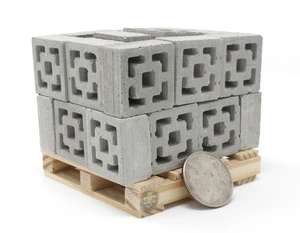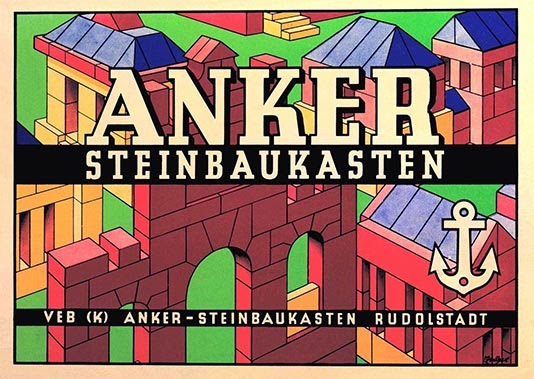12/25/2020 "Christmas Blocks"
Shop Wright Prairie House Blocks

Frank Lloyd Wright credited his mother with giving him Froebel wood building blocks at an early age; thus instilling in him the desire to become an architect. Even as an adult, Wright often used blocks as a scratch pad during the design process. Wright's work in the Prairie Style can be seen in his Robie House, Coonley House, and Dana House commissions. The Prairie Style features free-flowing interiors, low roofs, and horizontal profiles.



Froebel Blocks
When Friedrich Froebel established the first system for educating young children, he created a series of playthings to provide children with focussed educational experiences. Up until that time, toys were intended for amusement and education was provided through books and instruction. Froebel's Kindergarten used play as its engine and his Spielgaben ("play gifts") were the fuel. During his lifetime he codified the series of Froebel® Gifts up through Gift 6. After his death in 1852, his followers extended the series of educational toys by numbering other materials used in his school.
Froebel Gifts 2 through 6 (aka "the Building Gifts") are wood blocks in various shapes and quantities. Known most commonly as Froebel Blocks, these toys were made famous in the USA by the Milton Bradley Company. Milton Bradley himself was a strong advocate of the Froebel method. Josef Albers, Charles Eames, Buckminster Fuller, Johannes Itten, Paul Klee, and Frank Lloyd Wright are famous examples of children educated with the Froebel materials. The stone version of Froebel Blocks made in Germany by the Anker Steinbaukasten GmbH factory (founded by Adolf Richter, a wealthy businessman in Froebel's village of Rudolstadt) were a favorite toy of Albert Einstein.
Ownership Back in Rudolstadt
In June of 2017, Gollnest & Kiesel sells Anker Steinbaukasten to the workers' welfare association AWO Rudolstadt and the company is known as Ankerstein GmbH. The town of Rudolstadt is happy to save the company and continue the tradition of the company started more than 100 years before.
Did A Childhood Toy Inspire Frank Lloyd Wright?
When he was a child, Frank Lloyd Wright's mother gave him simple wooden Froebel blocks with the intention of raising an architect. Friedrich Froebel was a nineteenth century German educator who invented "kindergarten" and an educational system built around a series of "Gifts" which include the wooden blocks.
I have long been skeptical about these Froebel blocks really having any connection with Wright's work as an adult. How could these simple cubes and rectangles have any bearing on Wright's elaborate and sophisticated designs?


But I recently read several essays in the book On and By Frank Lloyd Wright: A Primer of Architectural Principles. The Froebel blocks and other "Gifts" are mentioned repeatedly in essays by various scholars. Richard MacCormac especially focuses on the topic in his essay Form and Philosophy: Froebel's Kindergarten Training and Wright's Early Work.



After reading this I was intrigued and decided to buy some Froebel blocks myself. It struck me that it would be possible to design a Froebel version of Wright's famous Unity Temple in Oak Park, Illinois. On a recent trip to Chicago, I took a side trip to visit Unity Temple so that I could make comparison photographs for this post.
The following are several excerpts in Wright's own words taken from Frank Lloyd Wright: An American Architecture edited by Edgar Kaufmann:
I finally pushed the staircase towers out from the corners of the main building, made them into free-standing, individual features. Then the thing began to come through as you see.
The Unity Temple of 1906 was reinforced concrete. It was the first building to come complete as architecture cast from forms....Why not make the wooden boxes or forms so the concrete could be cast in them as separate blocks and masses, these grouped about an interior space in some such way as to preserve this sense of the interior space, the great room, in the appearance of the whole building?...The wooden forms or molds in which concrete buildings must at that time be cast were always the chief item of expense, so to repeat the use of a single form as often as possible was necessary....This, reduced to simplest terms, meant a building square in plan. That would make their temple a cube -- a noble form in masonry.

Wright made the overall form of Unity Temple a cube. The stair towers are separated in the corners as vertical blocks (and represented in the Froebel version of Unity Temple with two stacked cubes : ) Even the lighting inside Unity Temple is made of cubes and spheres.

CarsonpiriescottWright called Louis Sullivan "mein liebe meister" (German for "my dear master") having apprenticed with him. But it seems his design bears more resemblance to the spare simplicity of Froebel, than it does to the exuberance of Sullivan as seen in this detail of Sullivan's Carson Pirie Scott Building.


Two dimensional grids form the basis of several of the Froebel Gifts. A grid pattern can be clearly seen both inside and outside at Unity Temple. Notice how two squares of the paving pattern match the width of a stair tower on the exterior. Inside, this grid continues in the pattern of the skylight in the ceiling.
Did the exposure to Froebel as a child really propel Wright's creativity? Are there other such direct examples of this phenomenon of play leading to design?
His mother provided sets of Froebel Gifts (wood blocks) to him at an early age in the hopes that he might one day become an architect. Even as an adult, Wright often used the Froebel blocks as a scratch pad during the design process. Wright’s work in the Prairie Style can be seen in his Robie House, Coonley House, and Dana House commissions. The Prairie Style features free-flowing interiors,













An Idea to Build Upon - in Concrete!

Anker Steinbaukasten (Anchor Stone building sets) begins with an idea of German educator Friedrich Froebel. He laid the foundation for kindergarten and modern education realizing the value of liberal thinking and creativity. Froebel created a series of playthings for teaching and exploration. These "Froebel Gifts" included a building series of various size and shape wooden blocks which became know as "Froebel Blocks". The concept is that these playthings help to develop the tactile senses, manual dexterity and also stimulate imagination, creativity and 3D perception.
A More Stable Block
Brothers Otto and Gustav Lilienthal were inspired by the wooden blocks of Friedrich Froebel and developed a formula for manufacturing mineral based building bricks. Their formula consisted of a mixture of quartz sand, chalk and linseed oil. The alternative for the wooden Froebel blocks was significantly more stable because of the weight and precision surfaces of the stones. The first Anker Steinbaukasten has a pleasant, smooth, natural feel.
Richter’s Anker Steinbaukasten
The creative ingenuity of the Lilienthal brothers was not accompanied with sales and marketing ability. They fell deeply in debt and were forced to sell their stone block formula to Adolf Richter, a wealthy businessman in Froebel's village of Rudolstadt. In 1880, Richter builds a factory for the manufacturing “Richter’s Anker Steinbaukasten” in Rudolstadt. At the same time an art institute is established where artists, illustrators and architects develop the building plans for the Anchor Stone building sets. The first worldwide building set system is born and distributed under the logo of a red squirrel.

In 1884 Richter launches the first block series with four different stone building sets. They are displayed at various exhibitions and win numerous awards. In 1887 the first Special Edition set is released in honor of the 10-year papacy of Pope Leo XII: a huge true to scale model of the house where he was born.
Marketing Success
Richter is one of the first in Germany to use large-scale colorful advertising and the poipularity of the product rises quickly. Before 1890, over 40,000 Anchor Stone Building Sets are produced and distributed under the Anchor logo. The Anchor Stone building sets become synonymous with creative, educationally valuable toys. Anchor Stones receive praise from many in high position; Thomas Edison and US President Grover Cleveland.
At the time of Richter’s death i n1910, the Anker Company is at its peak with branches all over Europe and the United States. There are 649 workers employed at the main factory in Rudolstadt, Germany.

Surviving Change
After long years of leadership without Richter, inflation after World War I leads to the loss of the entire. In 1921 the company is fundamentally re-organized and divided into two state-controlled stock corporations. Over time, the company in Rudolstadt is turned into a people-owned enterprise by the government of the German Democratic Republic.
Running Out of Steam in the GDR
Anker Steinbaukasten survived two wold wars without severe damage, but in 1963 the German Democratic Republic government stops the stone production. The company is closed and manufacturing plants are given away. With the exception of a very few complete building sets, all the stones are handed over for free to whoever can carry them away. According to estimates about 5 billion Anker Stones were sold in four hundred different sets from 1880 to 1963.

Rebirth
The Anchor Stone has fascinated and inspired several generations and even today hasn’t lost any of its charm. Thanks to a notably persistent group of Anchor Stone friends the building sets are back. It was Anchor Stone lover Georg Plenge, a professor of acoustics at the Technical University in Berlin, who started the Anchor Stone renaissance project. With the support of EU aid money and Thuringia, manufacturing is started again in 1995 with the original manuals. Anchor Stone is re-introduced to the market with box #6 and shortly thereafter with extension boxes 6A and 8A.











